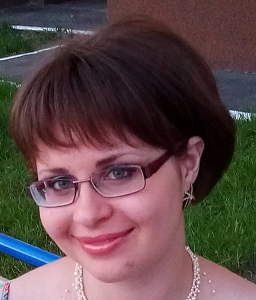Kateryna Svyrydova
Biology, molecular biology
Ph.D. student
Taras Shevchenko National university of Kyiv, Ukraine
Presenting about:
DNA loop domain reorganization in glioblastoma multiforme T98G and glioblastoma astrocytoma U373 cell lines under different culture conditions
Abstract: DNA loop domains are structures formed as a result of contacts between distal elements of 10 nm chromatin fiber. They play an important part in the transcription regulation system. It is known that a change in the cell transcription level is accompanied by the rearrangement of DNA loops in the cell nuclei.
Glioblastomas are considered to be one of the most common and aggressive malignant tumors in adults. Molecular mechanisms underlying this type of cancer are usually studied on different cell lines among which T98G and U373 cells are quite commonly used. Both of the cell lines have a few similar features as well as several characteristics that distinguish these cell lines from one another. Thus, comparison of chromatin organization in these cell lines, particularly in response to the change of culture conditions, requires special attention.
So, the aim of our study was to investigate DNA loop domain rearrangement upon functional transitions in two cell lines ‒ glioblastoma multiforme T98G and glioblastoma astrocytoma U373. Materials and Methods. Cells were maintained at 37°C in DMEM medium with 10% fetal bovine serum and antibiotics. In order to inhibit cell transcriptional activity T98G and U373 cells were put into the same medium without serum and incubated for 48 and 24 hours respectively. For re-stimulation to proliferation both cell lines were centrifuged, put into DMEM medium with 10% fetal bovine serum and cultured for 8 h or 16 h. Then cells were collected by centrifugation and washed twice with Hanks' salt solution. Other stages of the experiment were done according to the standard protocol of neutral comet assay. In particular, the obtained cell suspension was mixed with low-melting point agarose at 37°C. The cell-agarose mixture was then put on a microscope slide previously covered with 1% high-melting point agarose. After the polymerization of agarose the microscope slides were treated with the lysis buffer overnight. Several slides were then washed with TBE buffer and put into the electrophoresis tank with the same buffer. They were taken out every 5 or 10 minutes of electrophoresis, stained with DAPI and instantly analyzed with a fluorescent microscope. Using image analysis software CometScore (TriTek, USA) the relative amount of DNA in the tails and the tail length in the nucleoids on each slide were determined.

